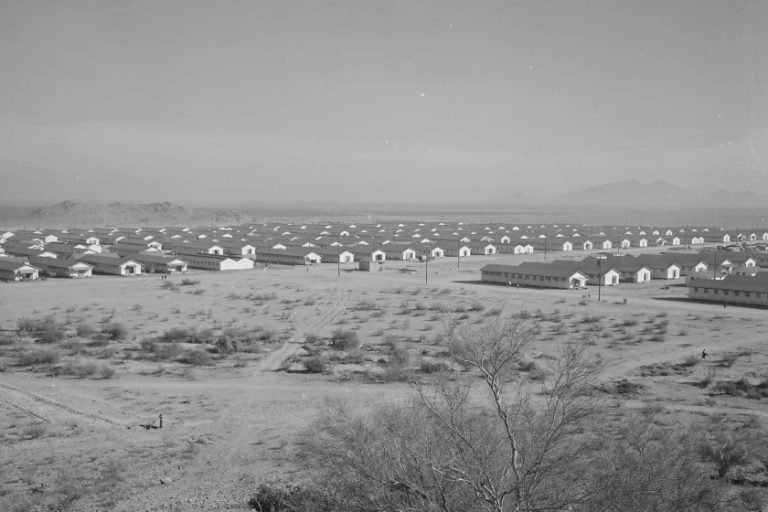Podcast: Play in new window | Download | Embed
Supporters of Leonard Peltier calling for his release spent the parole hearing outlining his re-entry plan and what his release would mean for Indian country.
As South Dakota Public Broadcasting’s Lee Strubinger reports, the parole board is expected to decide by early July.
Nick Tilsen is the president and CEO of NDN Collective.
He was one of two witnesses who testified in favor of Peltier’s release at a parole hearing on Monday.
Peltier is serving two life sentences in federal prison after being convicted for taking part in a fatal shootout between American Indian Movement members and FBI agents on the Pine Ridge Reservation in 1975.
Tilsen says the fight for Peltier’s release is an uphill battle, but he says he left the parole hearing with a little hope.
“One of the reasons why we fight for Leonard so fiercely is that how Leonard was treated during his prosecution and continued prosecution is consistent with how they have treated Indian people throughout history.”
Tilsen says NDN Collective has purchased a house for Peltier on the Turtle Mountain Reservation in North Dakota, where Peltier is enrolled.
He says he outlined Peltier’s re-entry plan, including helping Peltier get signed up for programming services through Indian Health Service (IHS) community health as well as building a sweat lodge near the home.
Kevin Sharp is Peltier’s lawyer.
He says if parole is approved, he expects an appeal from those opposed to his release.
Then, he says, Peltier would start re-entry.
“Leonard would likely be transferred to a medical facility while we work on getting the process inside the bureau of prisons taken care of. Could likely take months to get him out. If it is denied, then our next step is to appeal to the national appeal board.”
If they lose the parole hearing, Sharp says it could take years to appeal through the courts.
“Any appeal of any case ends up taking way too long.”
Peltier’s supporters feel time is of the essence. Sharp says Peltier’s health is failing.
His next parole hearing would be in fifteen years, which, he says, Peltier likely would not make it to.
Those opposed to Peltier’s release say he has not earned parole and should serve out his two life sentences.

Colorful rooftops line the Cheyenne River Indian Reservation. (Photo: Kristin Stoneback / Public domain)
The Cheyenne River Sioux Tribe in South Dakota has passed a formal resolution calling for an “immediate ceasefire” and humanitarian efforts in Palestine.
C.J. Keene has more.
Among things, the tribe calls for the US government to enforce the ceasefire, and guarantee the right of return to Palestinian people.
Secretary EvAnn White Feather signed the resolution this month.
After receiving more than 27,000 comments, Yellowstone National Park has released an updated bison management plan.
Olivia Weitz with Wyoming Public Radio at the Center of the West reports.
In a Final Environmental Impact Statement, the park has chosen an alternative that aims to keep the bison population between 3,500 to 6,000 animals after calving, an increase over the park’s current estimate of about 5,000.
To manage the herd’s size, the park says it will prioritize transferring live bison to tribal nations through the Bison Conservation Transfer Program and rely on tribal treaty hunts that take place outside the park, as well as occasionally slaughtering bison to give meat and hides to tribes.
The park had considered two other management alternatives.
One would have continued following the existing Interagency Bison Management Plan crafted in 2000 and would have maintained the herd at 3,500 to 5,000, similar to the past 20 years.
Another option would have increased the population range to 3,500 to 7,000 or more animals after calving and relied more heavily on natural selection.
Superintendent Cam Sholly commented on the plan prior to its release.
“We’re not going to blow the doors off the population even though a lot of people want me to do that. We’re not going to go down to super low numbers of bison, even though there’s people that want me to do that as well.”
Jason Baldes manages buffalo restoration on the Wind River Indian Reservation.
He wanted to see the herd increased to 7,000 animals so more bison could be transferred to tribal lands.
“Buffalo have been subjected to the whims of the stockgrowers and the cattle industry forever since cattle arrived. That status quo is something that needs to be challenged and that good old boy way of thinking needs to be challenged.”
Greater Yellowstone Coalition (GYC) executive director Scott Christensen said in a statement that the plan is an improvement from the Interagency Bison Management Plan signed in 2000, calling it “outdated and politically driven.”
“While we and many others asked for a higher population range, we also understand the park’s constraints with continued opposition from the State of Montana and limited habitat currently available to bison beyond park boundaries,”
The state of Montana has threatened to sue the park if it increases the herd size above 3,000 animals over concerns of potential disease transmission to cattle, among other issues.
There has not been a documented case of this happening through Yellowstone bison.
The plan’s release starts a 30-day wait period, after which the National Park Service will sign and publish a Record of Decision detailing the selected action.
Get National Native News delivered to your inbox daily and stay up-to-date on the 2024 Native Vote. Sign up for our daily newsletter today.




